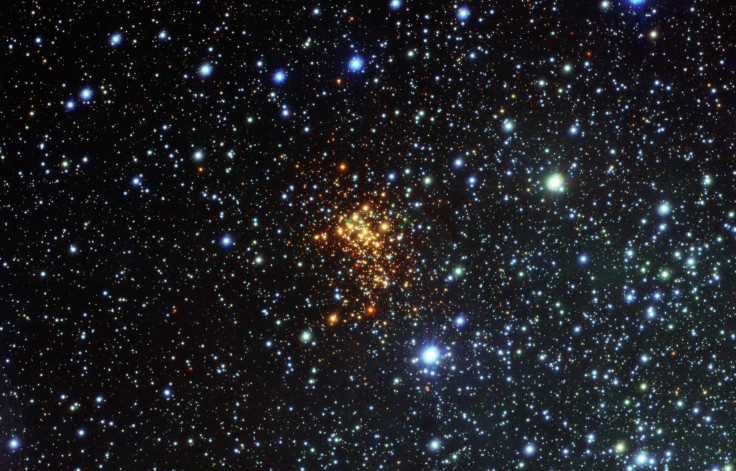Largest Star Ever Discovered, W26, Is 1,500 Times Larger Than The Sun, And On Its Death Bed
An international team of astronomers has observed W26, an incredibly massive star they believe is the largest ever discovered. The star is 1,500 times larger than our sun and its currently in its “death throes,” shedding its outer layers.

The death of a massive star such as W26, a red supergiant, can lead to new insights on how these objects, potentially, spur the growth of planetary systems. W26, located in the Westerlund 1, a star cluster 16,000 light-years from Earth, and researchers from the United States, Chile, Germany and the UK discovered the star using the European Southern Observatory’s Very Large Telescope, VLT, in Chile. The study was published in the journal Monthly Notices of the Royal Academy of Sciences. Westerlund 1 contains hundreds of thousands of stars, including red supergiants, Wolf Rayet stars and yellow hypergiants.
As noted by the Royal Academy of Sciences, massive stars, having 10 times or more the mass of the sun, have a short lifespan, numbering in the millions of years, and W26 is such a star at the end of its life. W26 is currently ejecting material from its outer layers, and this material is crucial for the development of rocky planets like the Earth. Nuclear reactions have enriched the material with elements, like magnesium and silicon, that are important for the creation of rocky planets and life, reports RAS.
A glowing cloud of ionized hydrogen gas surrounding W26 was what first captured the attention of astronomers. While the star is too cool to ionize, stripping electrons from hydrogen, the researchers think neighboring blue stars, which are incredibly hot, or an obscured companion star could be ionizing hydrogen, causing the cloud to glow.
W26 is at the end of its life but can be readily observed by researchers. Observing this star will help astronomers understand what happens at the end of a star’s life, including what material is ejected and how much mass will be lost. The fate of W26 will be an explosive one as it will go supernova one day.
© Copyright IBTimes 2025. All rights reserved.






















